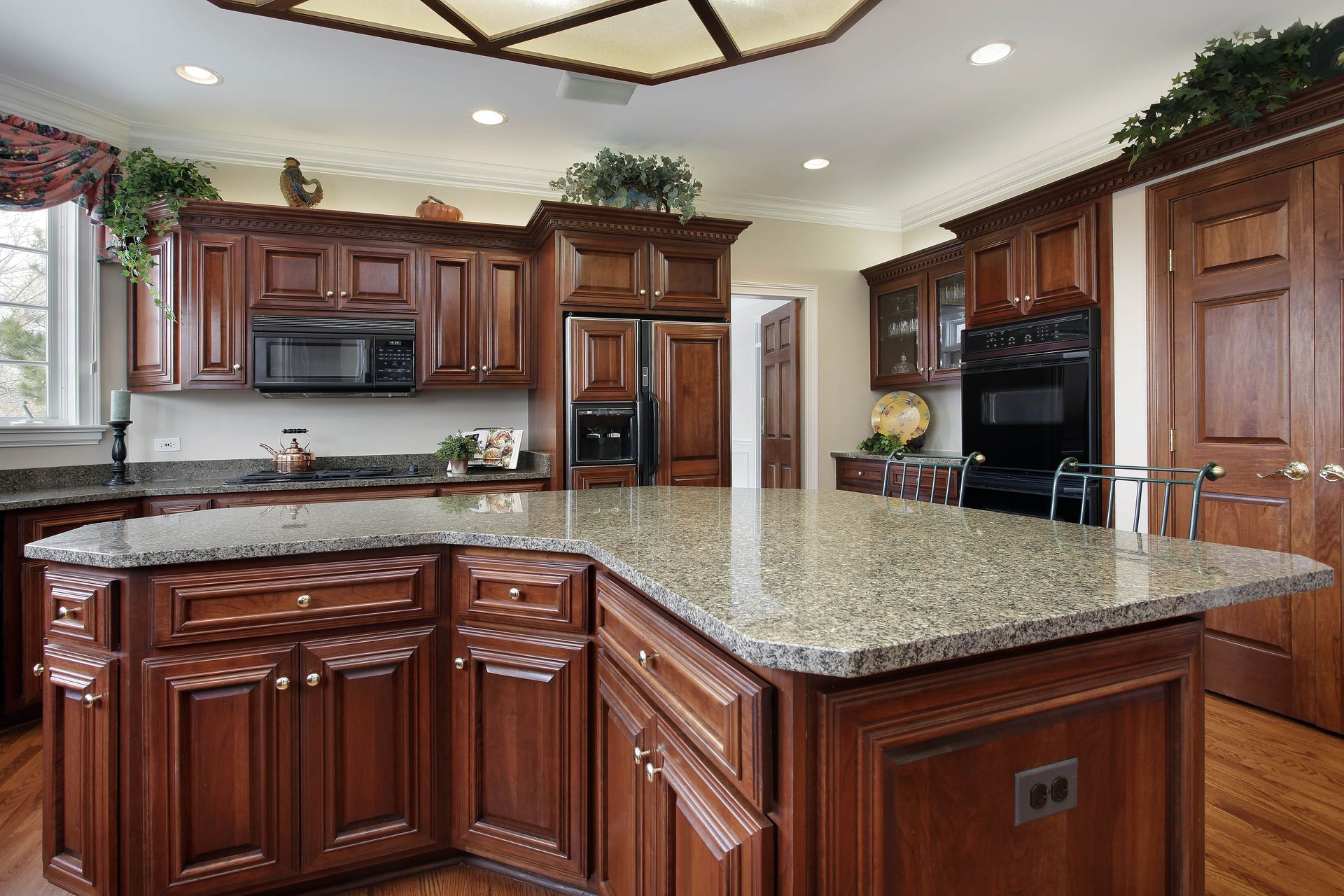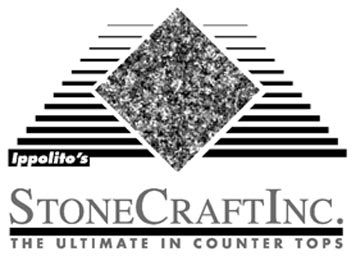October 13, 2025
In the world of interior design and home renovation, the choice of material is crucial. Marble and granite countertops are two of the most popular options for countertops, flooring, and other surfaces. Each has its unique characteristics, benefits, and drawbacks. This article will explore the differences between marble and granite to help you make an informed decision for your home. By understanding their unique attributes, you can choose the material that best fits your aesthetic preferences, lifestyle, and budgetary constraints.
Understanding Marble
Marble is a metamorphic rock formed by the recrystallization of limestone under extreme heat and pressure. This process gives marble its distinct veining and a wide range of colors, from classic whites to deep blacks, greens, and reds. The softness of marble allows it to be polished to a high shine, enhancing its visual appeal. Its smooth, cool surface is a favorite in settings that demand elegance and luxury. Due to its porosity, marble requires special care to maintain its beauty over time.
Marble is often used in home interiors for flooring, countertops, and bathroom vanities due to its unique veined appearance. It is also favored in art and sculpture, owing to its workability and aesthetic qualities. The material is a staple in classical architecture and high-end residential and commercial spaces, where style is paramount. While it's less commonly used in kitchen countertops due to its susceptibility to stains, many homeowners still choose it for its unparalleled elegance. Marble can also be found in fireplaces and shower surrounds, providing a touch of luxury within homes.
The aesthetic appeal of marble is rooted in its natural, organic patterns and its ability to convey a sense of timeless beauty. Each marble slab is unique, with intricate veining patterns that add depth and character to a space. Its reflective surface contributes to a feeling of light and spaciousness, enhancing the overall ambiance of a room. The luxurious appearance of marble has made it a lasting symbol of sophistication and prestige. Despite being a traditional material, its versatility makes it suitable for both classic and modern interiors.
2. Maintaining Durability of Granite Countertops
Granite is an igneous rock formed from the slow crystallization of molten magma beneath the Earth's surface. It is composed mainly of quartz and feldspar, which give it a granular texture. Granite's popularity stems from its incredible hardness and varied appearance, available in an extensive array of colors and patterns. Its natural composition makes it one of the hardest materials used for countertops, providing excellent resistance to scratches and chips. This Old House notes that granite's range of colors and patterns enhances its broad appeal, catering to diverse stylistic preferences.
Granite countertops are primarily used for kitchen and bathroom countertops due to their durability and aesthetic versatility. Its ability to withstand heat, stains, and scratches makes it ideal for high-traffic areas. Outdoor applications, such as patios and garden pathways, also benefit from granite's robust nature. According to This Old House, granite is one of the most popular stone countertop materials, known for its durability and range of colors and patterns. Homeowners appreciate its capacity to handle the wear and tear of daily use, making it a practical choice. Given its robustness, granite is also used in commercial buildings where long-lasting surfaces are required.
The aesthetic appeal of granite lies in its natural elegance and the rich, speckled patterns each slab presents. Available in a broad spectrum of colors, granite can complement virtually any decor style, from traditional to contemporary. Its polished surface enhances its beauty, reflecting light and adding depth to any space. The uniqueness of each piece ensures a personalized touch for every installation. Its diverse visual offerings make it a dynamic choice for homeowners looking to make a statement.
3. Texturing and Finish Options
Marble offers an elegant palette of colors primarily dominated by whites, grays, and blacks, but also includes greens, pinks, and browns. Its colors are generally more subdued, with soft, flowing patterns that appeal to a classic aesthetic. Granite countertops provide more diverse color options due to their mineral composition, offering vibrant blues, greens, browns, and blacks. The variety allows granite to accommodate broader design preferences, matching both bold and neutral palettes. The choice between the two depends on whether you prefer the soft veining of marble or the speckled flair of granite.
Marble is renowned for its soft, flowing veins that create an impression of motion and fluidity. These intricate veining patterns are naturally formed, resulting in a one-of-a-kind look for each slab. Granite, on the other hand, offers a more granular appearance with speckles and flecks distributed across its surface. This pattern diversity adds to granite's versatility, enabling dynamic visual appeal. Homeowners looking for a specific pattern will appreciate the distinct allure that either material brings.
Both marble and granite offer a range of textures and finishes that can align with different design preferences. Marble is often polished for a high-gloss finish, reflecting its elegance and luxurious nature. Alternatively, it can be honed for a matte appearance, adding subtle sophistication. Granite countertops can be polished, honed, or even flamed for a textured finish that enhances visual interest. The choice of texture and finish influences not only aesthetics but also maintenance levels.
4. Comparing Durability
Granite's resistance to scratches and chips is a key attribute, making it an excellent choice for kitchen and bathroom surfaces. Its hard, crystalline structure allows granite to withstand rough use with minimal risk. While marble offers impressive beauty, it is softer and more prone to scratches and chips, especially in high-traffic areas. Homeowners must take special care with marble to avoid unsightly damage. Ultimately, those seeking a low-maintenance, durable material often favor granite.
Stain resistance is an important consideration when choosing countertop materials, especially in the kitchen. Granite, when properly sealed, can resist most stains, providing peace of mind for frequent cooks and families. Marble's porosity, however, makes it more susceptible to stains from food, beverages, and everyday household chemicals. Regular sealing is crucial for marble to provide some level of defense against staining. Those who prioritize stain resistance may lean towards choosing granite for its superior protection.
Both granite and marble offer a certain degree of heat resistance, although granite is more adept at withstanding high temperatures. Homeowners can place hot pots and pans directly on granite surfaces without fear of damage, although it is generally advisable to use protective materials. Marble is more sensitive to heat; therefore, trivets and cutting boards are recommended to prevent thermal shock. Durability under high temperatures is a unique advantage of granite that appeals to avid cooks. This attribute increases granite's reliability in kitchen environments.
Cleaning Requirements
Routine cleaning is vital in preserving the aesthetic appeal of both granite and marble surfaces. Granite countertops require minimal upkeep, generally necessitating only a damp cloth and mild, pH-balanced cleaner to maintain their luster. Marble surfaces, however, are more delicate, requiring specialized cleansers and careful attention to avoid damaging their surface. Acidic cleaners should be avoided on marble to prevent etching. Regular cleaning ensures that both materials maintain their pristine condition over the years.
Both marble and granite benefit from regular sealing, though granite's dense nature may allow for less frequent applications. Sealing provides a protective barrier against stains, helping to maintain the natural beauty of the stone. Marble's porosity requires diligent sealing efforts as a key part of its long-term maintenance strategy. Granite's low porosity means sealers last longer, needing reapplication every one to two years, whereas marble may require more frequent upkeep. Regular sealing is integral to preserving the integrity and appearance of both stones.
Choosing between marble and granite countertops ultimately depends on your personal preferences, lifestyle, and budget. Marble offers timeless elegance and aesthetic appeal, while granite is celebrated for its durability and strength. By understanding the unique characteristics, benefits, and drawbacks of each material, you can make a choice that best fits your needs and enhances the beauty and functionality of your home. Both materials deliver unique design advantages, catering to varied interior styles and functional requirements. Careful consideration of durability, maintenance, and visual preferences will aid you in making the most appropriate decision. For more information about the services that we offer, reach out to our incredible team at Ippolito's StoneCraft, INC today!
















